Scooter Chic: An Interview with GoGo Gear’s Arlene Battishill
Some of the most mod and stylish figures of the swinging 60’s were influenced by motorcyle riding gear. James Dean and Marlon Brando started the trend in the 1950s by popularizing leather riding jackets in movies, and later, fashion icons like Marianne Faithful, Twiggy and Jean Shrimpton were seen around swinging London wearing stylish trench coats, leather boots and even mod riding hats. Fashion forward to today and those styles live on in the Go Go Gear line founded by Los Angeles fashion innovator and scooter devotee Arlene Battshill. Her company provides “scooter girls” with stylish riding gear that channels 60s sensibilities, while offering protective gear that is as practical as it is modern. The Avenger’s Mrs. Emma Peel would love the Go Go Gear stylish trench. Beyond the trench, the Go Go collection includes a military jacket, a vintage looking designer coat, a ventilated jacket called the Cafe and a sleek short jacket called the Racer. The designs are cruelty free as they are not made from leather, which has always been the material used for traditional biking gear.
I’m not a Scooter Girl, but one look at this collection and I was intrigued. These looks are more Vogue than Harley Babe. Quite ingeniously, all the designs have a purpose, and that is to protect the rider. Hidden away in each garment is protective insulation to cushion a fall. Last weekend, I interviewed Arlene to talk about how she came to create GoGo Gear and what inspires her. In talking to her, its clear that Arlene knows as much about Coco Chanel and fashion as she does riding. It is this perspective that informs her designs and make them unique. Although Arlene quite modestly, does not think of herself as a designer, it is clear that she is a designer and an innovator. She took her passion for riding, and coupled it with the need for protective riding garments to create GoGo Gear. She has a vision that is tailored to her particular customer. Since its launch, her line has won awards and garnered worldwide press attention. In a short time, she has developed a loyal following that tracks new shipments of her clothes and eagerly awaits them. Her line comes in regular and plus sizes, so it is accessible to all women. This is part one of my interview with Arlene.
Q. What inspired you to design fashion for women riding scooters or motorcycles?
Given that I ride a scooter and motorcycle and don’t wear leather when I can avoid it, my options for decent looking protective wear were pretty limited. The line started as “360”, an experiment in creating something that would give me the greatest visibility on the street, which meant 360 degree visibility. It was a line of reversible, reflective vests that you could wear on one side during the day and reverse it for maximum visibility at night. It was appropriate for bikers, joggers or anyone that might be outside and night and concerned about their safety. Although the “360” products are effective, they don’t address some other fundamental safety issues such as what happens on impact if you hit the ground or if you are sliding across the pavement during a fall. These other safety needs are what led to the development of GoGo Gear as you see it today. It incorporates the need for high visibility along with impact protection and abrasion resistance. Most of all, GoGo Gear addresses the primary problem that women have with protective riding gear, it’s unattractive, doesn’t fit properly, is too short in the back, has sleeves that aren’t long enough and is either light blue, pink or black and has branding plastered all over it. These are the most common complaints that women riders have about their riding gear and if a woman doesn’t like how she looks in something, she won’t wear it, even if it’s for her own protection.
Q. Your styles intrigue me–they are not the Harley Babe look, they are really stylish? What is the best seller? The Trench?
Although I’ve ridden Harley’s before, I was never one to get into the leather “biker chick” look. I’m not a biker chick, I’m just a girl who rides and wants to look cute when I’m riding, so the whole biker chick thing was never going to work for me. The Trench is, in fact, our best seller, both in the grey and black. It’s really interesting to see the sales of our jackets and get validation for what my instincts were telling me in the beginning. At the start, I knew we wanted to attract as many women as possible to our jackets and when you have a demographic as wide as our, namely young women who have just gotten their driver’s license all the way into their 70s, we had to determine what kind of designs would appeal to so many women. I’m probably lucky that I was a tomboy as a kid and fashion was never something I paid much attention to. I was always more comfortable in a sweatshirt and jeans, probably because I was too afraid to wear anything that would
have been considered fashionable. Even today, most of my wardrobe is black because I can’t put together an outfit without having to ask someone else how I look, so starting from that place, the designs were always going to be what would probably be considered “safe”. For me, “safe” actually translates into “classic” and a classic look never goes out of style, never goes out of fashion. As a result, I think that the Trench jacket has a classic look, a European feel to it and has some details that really make it stand out. The reflective details throughout the jacket, on the back of the neck, the lapels, the reverse side of the belt and the inside of the cuffs are so different and unique, that’s what really draws people’s attention. Plus, the placement of the belt changes the way the jacket looks on a woman, especially for plus size women. It’s also a design that will looks great on the tomboy or the femme fatale!
Q. How long have you been designing? What inspires you?
For me, it feels kind of odd to be asked “how long have you been designing” because I’m not a designer. I don’t have any training and I couldn’t tell you one designer from another. I’m just someone who needed a garment for a specific purpose and couldn’t find one. I had also recently lost my job and needed to figure out something else I could do. I think that sometimes when you don’t know how to do something, you just charge ahead in complete ignorance of all the things you’re not supposed to do and I just ended up with something that apparently met the needs of a lot of other people. I didn’t have a set look in mind when designing the jackets, only that they be classic. Since I have a particular fondness for European styling, the more streamlined look resulted. The bigger issue was the need to incorporate and engineer safety features into the jackets and have them strategically placed. This was a huge and expensive undertaking and probably why
no one has ever done this before so a lot of the engineering of the jackets influences the designs.
As for what inspires me, now that I’m manufacturing clothing, I look at everything but it’s always from the perspective of seeing something that I think I might be able to add to one of our jackets or another way of putting a safety feature in or perhaps locating a pocket in some unique way that also serves a functional purpose for the rider. My orientation is always that I appreciate the beauty of something I’m seeing but ultimately I have to make the engineering work and that’s when the design changes.
Q You mentioned CoCo Chanel on your blog–any inspiration from her? In her lifetime, she was criticized for drawing some of her inspiration from menswear. Is that something you can relate to?
I can completely relate to this because what she was doing was so unconventional for its time. The thing I most appreciate about CoCo Chanel is that she took something common, menswear, and did something completely unexpected with it, she transformed it and it became something for a completely different consumer. That’s what we’ve done with our jackets. You start in one place and end up in another. And like CoCo Chanel, it’s something that is causing people to rethink the traditional and consider other ways of doing things. People often ask me about the success of our line and what I tell them is that you have to do something unexpected, so for example, if you make outerwear, go and show it at a bathing suit or lingerie tradeshow. Why, because this is how you’re going to stand out and get people to notice and talk about you. This is what happened to us in Milan last year where we were among 1,400 exhibitors from 31 countries with just a little 15×15 booth compared to exhibits that seemed the size of a city block. We stood out because no one ever expected to see fashion combined with protective wear and as a result, captured the European press’ attention. Another thing about CoCo Chanel is that she was able to take something very basic and turn it into something else, hence, the “little black dress.” The little black dress took us out of all of the pomp and circumstance of women’s fashion at the time and into something that from my perspective was sublimely elegant and for me, in all my tomboy-ness from youth, completely transforming. And, as an aside, to pay homage to CoCo Chanel, I’m getting a new motorcycle this week and I’ve already named it “CoCo Chanel” in part because the bike is very much like her and our jackets, unexpected, not what it’s supposed to be, and absolutely adorable.
Stay tuned for Part Two of my interview with Arlene where she talks about how she uses Social Media to market her brand. Her use of Social Media is as innovative as her design story. She calls Twitter, “The best money you’ll never spend.” If you want to know what’s happening with the GoGo Gear line, click here to follow Arlene on Twitter @LAScooterGirls. If you follow her Tweets, then you’ll immediately understand the loyalty her community feels for her. It’s refreshing to see a designer who is so in tune with her customers that she has built a community so she can listen to them on a constant, on-going basis. Many designers have Twitter communities, but not all of them are actively listening and learning from them.

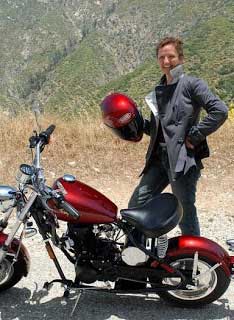
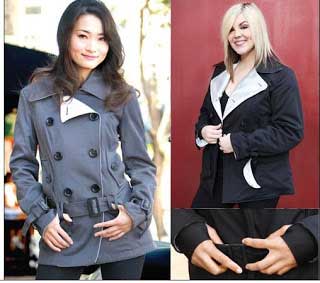
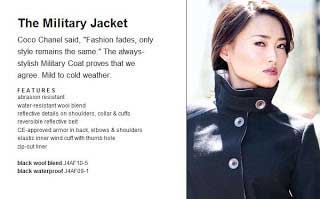




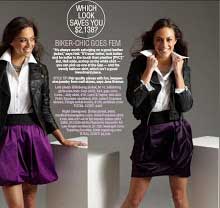
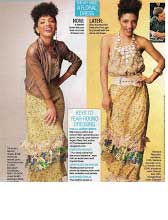






0 comments